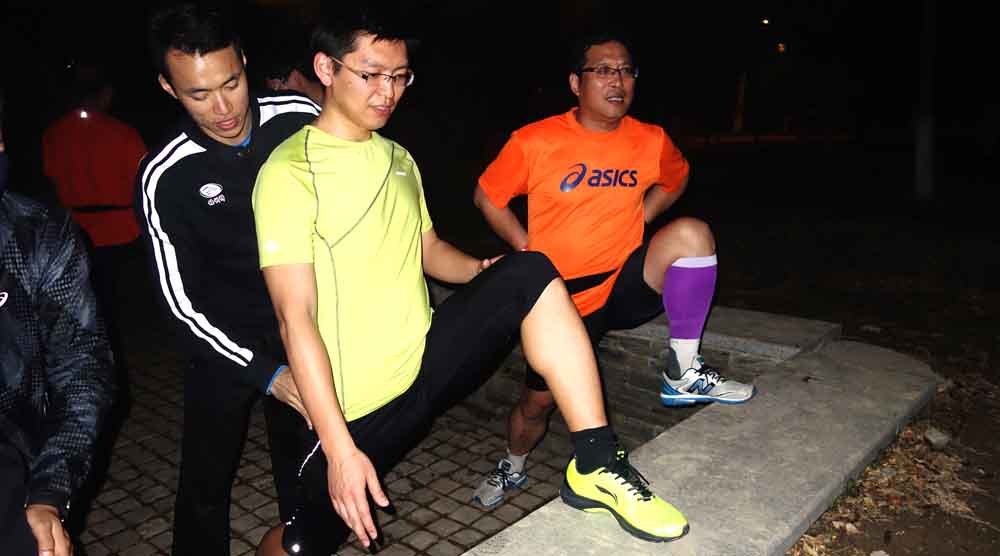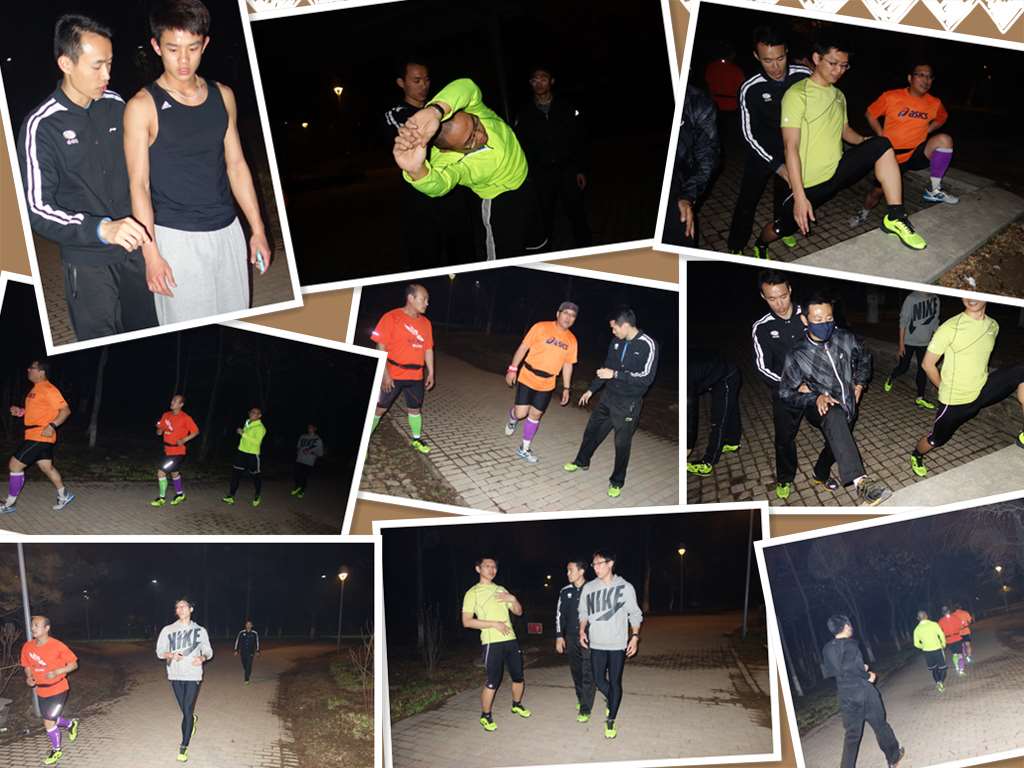
Time: March 26, 2014
Place: Beijing Olympic Forest Park
Event: “Evaluation for the impact of mesopodium running techniques on sports performance”
The eight sections of the Technical Training of Mesopodium Running are half way through, and the runners who actively participated in the training gained much progress, which showed not only in their techniques, but also in physical sensations.
Beijing today was completely enveloped in haze, and the park was no exception. At seven o’clock, everyone arrived on time to attend today’s training at the park.
Due to the weather, coach Mo did not arrange too many warm-ups that required a lot of oxygen. Instead, he focused the preparatory activities on stretching and coordination training. The runners were accustomed to their running postures, and even after their muscles got tired, they paid no attention to trying to relax them, which caused common large muscle groups to tense up. When muscles are tight, flexibility is then reduced; therefore, when stretching, they could not help but generate tension, which would affect stretching action. So, muscle stiffness is very much related to lack of coordination of movement. We should review new postures, consolidating the techniques we have learned, and it is vital to relax our muscles at the beginning.

After finishing preparatory activities, a routine 5 km training run was followed. After completing these 4 training sections, the runners were able to master the basic essentials, and could run very “lightly.” We took a varied pace approach, and experienced the difference under slow pace and fast pace conditions, using mesopodium running techniques. We did something different from the previous 5 km run; we divided the 5 km run into two, and arranged 3-minute stretching in between. This appeared to be very effective because after stretching, the runners seemed to be unloading a burden and easily finished the last 2.5 km. The time showed that even with more terrain changes in the second half, the speed was faster, and they did not feel the fatigue as usual.
After the 5 km run, runners all agreed that their lower extremity joints felt different, and their knee joints did not feel the pain like before, but more of a soreness. Coach Mo said that this can be called successful with only 4 sections, but in order to cure previous injuries, we need to continue on.
This is the light before dawn; running means hope and glory!
Written by Chen Jixiang, intern

